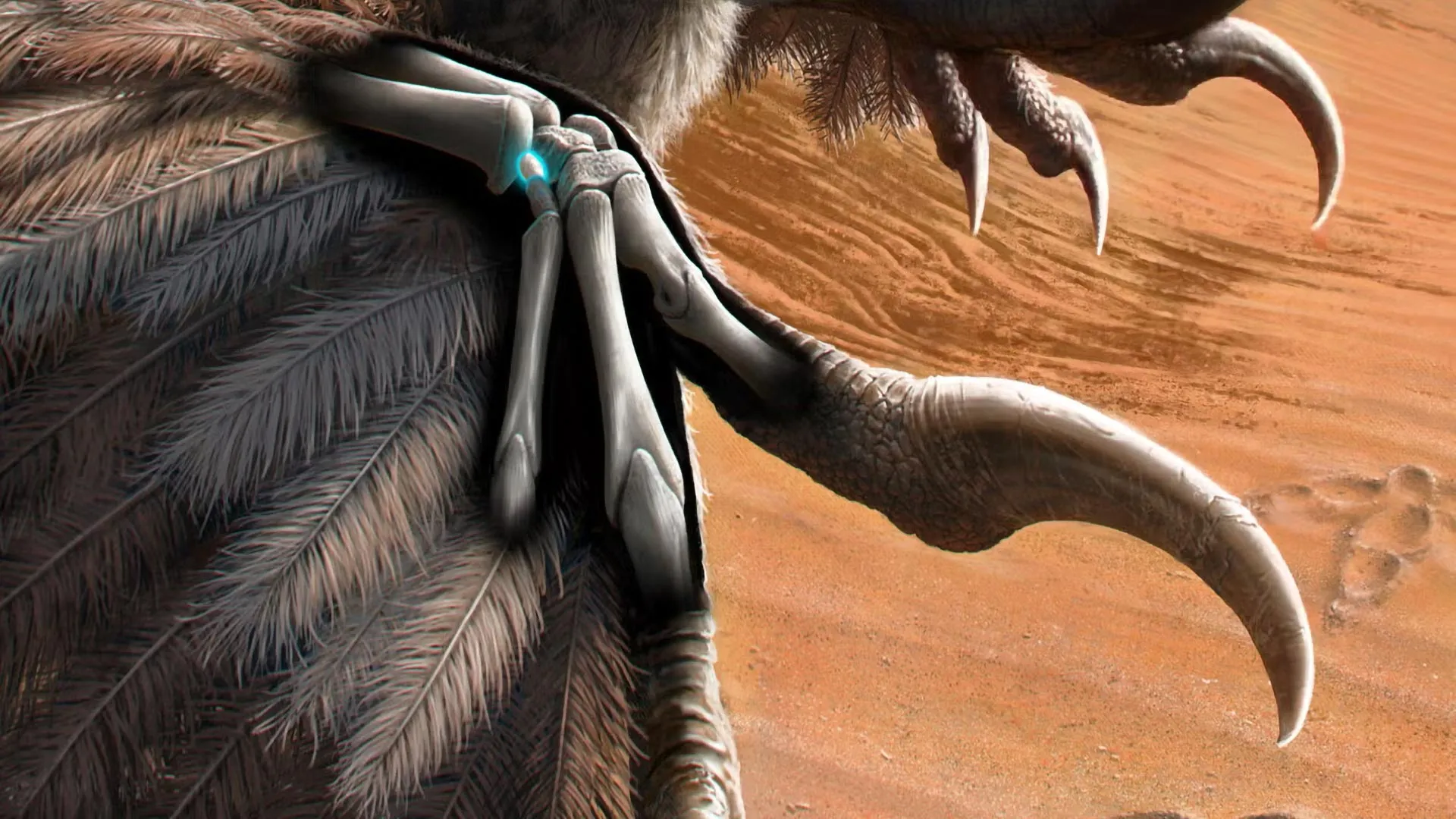A tiny dinosaur bone just rewrote the origin of bird flight
- Date:
- July 24, 2025
- Source:
- Yale University
- Summary:
- A tiny, overlooked wrist bone called the pisiform may have played a pivotal role in bird flight and it turns out it evolved far earlier than scientists thought. Fossils from bird-like dinosaurs in Mongolia reveal that this bone, once thought to vanish and reappear, was actually hiding in plain sight. Thanks to pristine preservation and 3D scans, researchers connected the dots between ancient theropods and modern birds, uncovering a deeper, more intricate story of how dinosaurs evolved the tools for powered flight.
- Share:

The evolutionary path from dinosaurs to birds included the development of a tiny wrist bone that ultimately proved crucial for stabilizing wings in flight. A new study suggests that the bone appeared in bird ancestors millions of years earlier than first thought.
Paleontologists at Yale and Stony Brook University led a research team that made the discovery after examining fossils from two species of bird-like dinosaurs -- an unnamed troodontid and a Citipati from the Late Cretaceous period 66 to 100 million years ago -- found in the Gobi Desert in Mongolia. The findings were published in the journal Nature.
"We were fortunate to have two immaculately preserved theropod wrists for this," said Alex Ruebenstahl, a student in Yale's Graduate School of Arts and Sciences and member of the lab of Yale paleontologist Bhart-Anjan Bhullar. Both Ruebenstahl and Bhullar, as well as Norell, are co-authors of the new study.
"Wrist bones are small and even when they are preserved, they are not in the positions they would occupy in life, having shifted during decay and preservation," Ruebenstahl said. "Seeing this little bone in the right position cracked it wide open and helped us interpret the wrists of fossils we had on hand and other fossils described in the past."
The evolution of theropod dinosaurs into birds included significant anatomical modifications, such as the enlargement of the brain, changes in the pelvis and its surrounding musculature -- and a transformation of the dinosaur forelimbs.
One of the key changes in the forelimb transformation was the replacement of a particular dinosaur wrist bone -- the ulnare -- with a bone called the pisiform in birds. In the fossil record, pisiform bones appeared in very early theropods, then disappeared, only to return in birds.
"The pisiform, in living birds, is an unusual wrist bone in that it initially forms within a muscle tendon, as do bones like your kneecap -- but it comes to occupy the position of a 'normal' wrist bone called the ulnare," said Bhullar, associate professor of Earth and planetary sciences in Yale's Faculty of Arts and Sciences. "Because it is so intimately associated with arm musculature, its incorporation into the wrist ties the muscular flight machinery to wrist motion. This integration is particularly important for stabilizing the wing during flight."
"This discovery pulls back the origin of the integrated pisiform on the bird evolutionary lineage by tens of millions of years," he added.
Ruebenstahl had been studying the forelimb of the unnamed troodontid specimen -- which was discovered in the Gobi Desert by a team led by Yale alumnus Mark Norell, a paleontologist at the American Museum of Natural History -- simply to gain a better understanding of the overall specimen. He was conducting three-dimensional visualizations of bones, based on scans performed by Bhullar, with a technique called computed tomography. When he got to the specimen's wrists, however, he became confused.
"There was this bone that wasn't supposed to be there and was not present in the literature for these groups," he recalled.
After contacting his friend James Napoli, a paleontologist at Stony Brook University, he learned that Napoli had already noticed a similar wrist bone articulation in a different Mongolian dinosaur, a Citipati (also discovered by a Norell-led team).
"It was evident we had an exciting discovery on our hands … or wrists," Ruebenstahl said.
Further analysis, including CT visualizations of the Citipati wrist, showed the unidentified bones were pisiform bones. The researchers then expanded their efforts to re-identify wrist bones in other dinosaurs -- bones originally thought to be ulnares -- as pisiforms.
"It shows that the integrated pisiform evolved prior to modern avian flight," Bhullar said. "It was diminutive in these near-bird dinosaurs, which is consistent with our emerging understanding of their flight capabilities as being somewhat limited, lacking the power and maneuverability that modern birds enjoy.
"In my lab's earlier paper in Science on inner ear evolution in the bird line, we drew similar conclusions," Bhullar added. "There we found that a primitive sort of flight might have appeared near the common ancestor of troodontids and birds specifically."
Bhullar's lab also studied the development of some of the flight muscles associated with the pisiform in a 2022 Nature Ecology & Evolution paper.
Napoli, of Stony Brook, is the new study's lead author. Co-authors of the study, along with Ruebenstahl and Bhullar, are former Bhullar Lab member Matteo Fabbri, who is now at Johns Hopkins University, Jimgmai O'Connor, of the Field Museum of Natural History, in Chicago, and Norell.
Additionally, the research continues a rich Yale research tradition of advancing human understanding of the evolution of birds from dinosaurs. In the 1960s, Yale paleontologist John Ostrom identified another wrist bone -- the semilunate carpal -- found in both meat-eating dinosaurs and modern birds. In the 1980s, Yale paleontologist Jacques Gauthier was first to definitively show that this wrist bone was a feature linking dinosaurs to birds.
Story Source:
Materials provided by Yale University. Note: Content may be edited for style and length.
Journal Reference:
- James G. Napoli, Matteo Fabbri, Alexander A. Ruebenstahl, Jingmai K. O’Connor, Bhart-Anjan S. Bhullar, Mark A. Norell. Reorganization of the theropod wrist preceded the origin of avian flight. Nature, 2025; DOI: 10.1038/s41586-025-09232-3
Cite This Page: